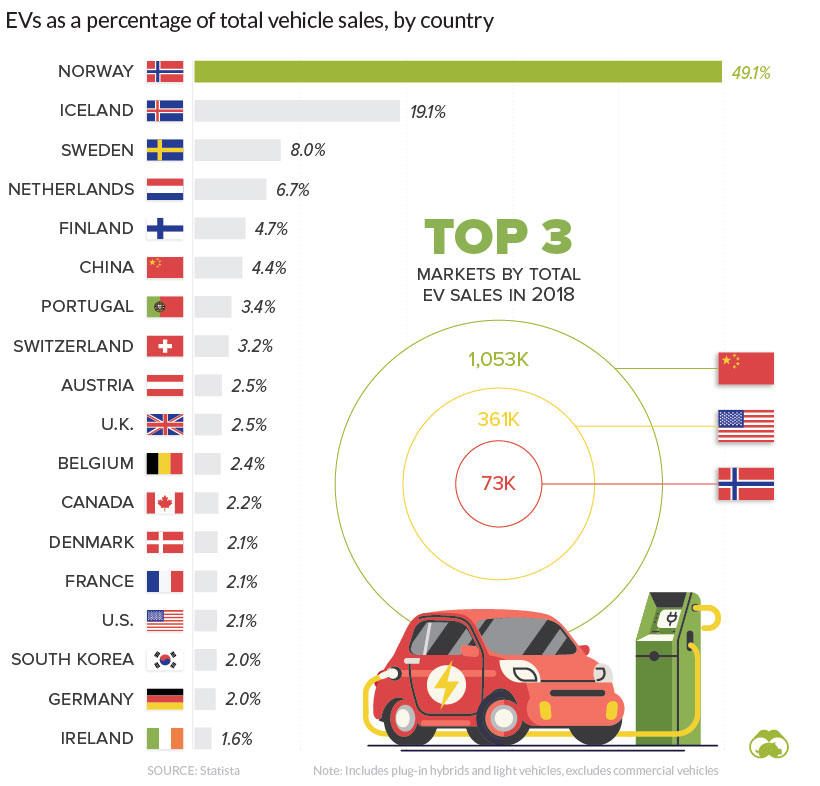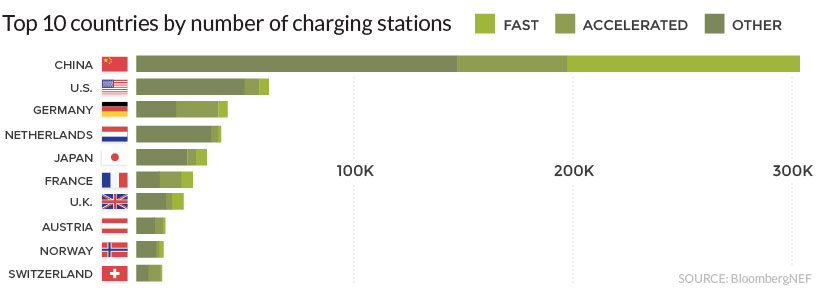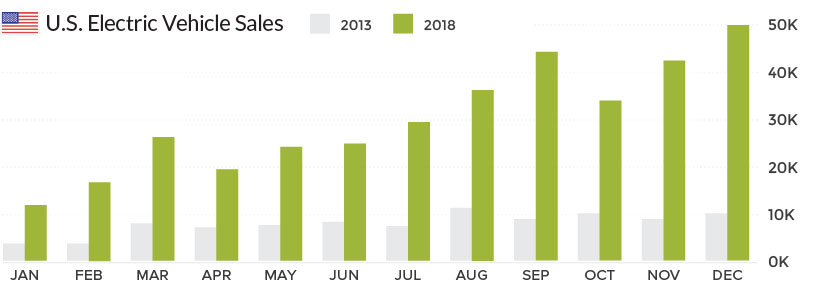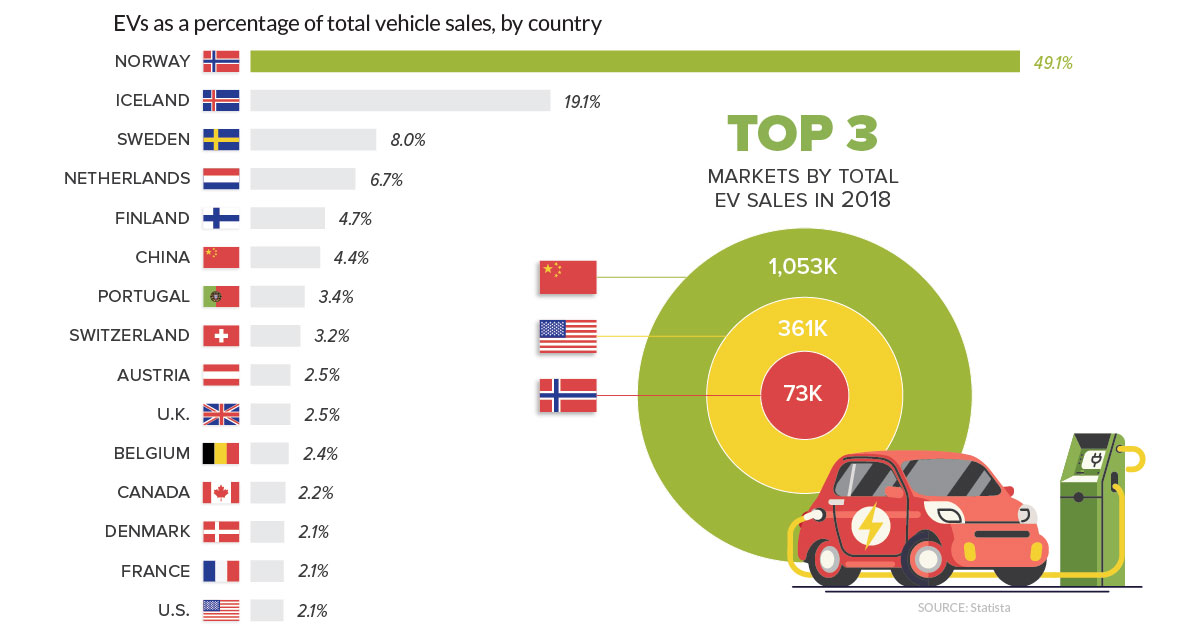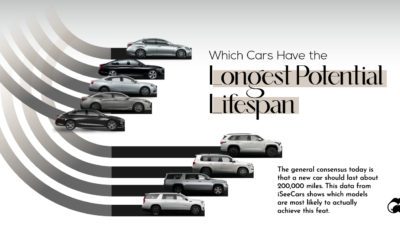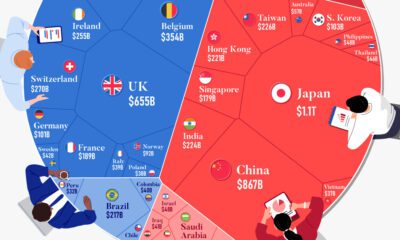The Tesla Model 3 also passed a significant milestone in 2018, becoming the first electric vehicle (EV) to crack the 100,000 sales mark in a single year. The Nissan LEAF and BAIC EC-Series are both likely to surpass the 100,000 this year as well. Although the electric vehicle market didn’t grow as fast as some experts initially projected, it appears that EV sales are finally hitting their stride around the world. Below are the countries where electric vehicles are a biggest part of the sales mix.
The EV Capital of the World
Norway, after amassing a fortune through oil and gas extraction, made the conscious decision to create incentives for its citizens to purchase electric vehicles. As a result, the country is the undisputed leader in EV adoption. In 2018, a one-third of all passenger vehicles were fully electric, and that percentage is only expected to increase in the near future. The Norwegian government has even set the ambitious target of requiring all new cars to be zero-emission by 2025. That enthusiasm for EVs is spilling over to other countries in the region, which are also seeing a high percentage of EV sales. However, the five countries in which EVs are the most popular – Norway, Iceland, Sweden, Netherlands, and Finland – only account for 0.5% of the world’s population. For EV adoption to make any real impact on global emissions, drivers in high-growth/high–population countries will need to opt for electric powered vehicles. (Of course power grids will need to get greener as well, but that’s another topic.)
China’s Supercharged Impact
One large economy that is embracing plug-in vehicles is China. The country leads the world in electric vehicle sales, with over a million new vehicles hitting the roads in 2018. Last year, more EVs were sold in Shenzhen and Shanghai than any country in the world, with the exception of the United States. China also leads the world in another important metric – charging stations. Not only does China have the highest volume of chargers, many of them allow drivers to charge up faster.
Accelerating from the Slow Lane
In the United States, electric vehicle sales are rising, but they still tend to be highly concentrated in specific areas. In around half of states, EVs account for fewer than 1% of vehicle sales. On the other hand, California is approaching the 10% mark, a significant milestone for the most populous state. Nationally, EV sales increased throughout 2018, with December registering nearly double the sales volume of the same month in 2017. Part of this surge in sales is driven by the Tesla’s Model 3, which led the market in the last quarter of 2018.
North of the border, in Canada, the situation is similar. EV sales are increasing, but not fast enough to meet targets set by the government. Canada aimed to have half a million EVs on the road by 2018, but missed that target by around 400,000 vehicles. The big question now is whether the recent surge in sales is a temporary trend driven by government subsidies and showmanship of Elon Musk, or whether EVs are now becoming a mainstream option for drivers around the world. on Over recent decades, farmers have been able to more than double their production of crops thanks to fertilizers and the vital nutrients they contain. When crops are harvested, the essential nutrients are taken away with them to the dining table, resulting in the depletion of these nutrients in the soil. To replenish these nutrients, fertilizers are needed, and the cycle continues. The above infographic by Brazil Potash shows the role that each macronutrient plays in growing healthy, high-yielding crops.
Food for Growth
Nitrogen, phosphorus, and potassium (NPK) are three primary macronutrients that are the building blocks of the global fertilizer industry. Each plays a key role in plant nutrition and promoting crop growth with higher yields. Let’s take a look at how each macronutrient affects plant growth. If crops lack NPK macronutrients, they become vulnerable to various stresses caused by weather conditions, pests, and diseases. Therefore, it is crucial to maintain a balance of all three macronutrients for the production of healthy, high-yielding crops.
The Importance of Fertilizers
Humans identified the importance of using fertilizers, such as manure, to nourish crops dating back to nearly 6,000 to 2,400 BC. As agriculture became more intensive and large-scale, farmers began to experiment with different types of fertilizers. Today advanced chemical fertilizers are used across the globe to enhance global crop production. There are a myriad of factors that affect soil type, and so the farmable land must have a healthy balance of all three macronutrients to support high-yielding, healthy crops. Consequently, arable land around the world varies in the amount and type of fertilizer it needs. Fertilizers play an integral role in strengthening food security, and a supply of locally available fertilizer is needed in supporting global food systems in an ever-growing world. Brazil is one of the largest exporters of agricultural goods in the world. However, the country is vulnerable as it relies on importing more than 95% of its potash to support crop growth. Brazil Potash is developing a new potash project in Brazil to ensure a stable domestic source of this nutrient-rich fertilizer critical for global food security. Click here to learn more about fertilizer and food production in Brazil.
